It has long been known that, when the microphone is moved from the top of the ear (as in BTEs) to somewhere inside the auricle (as in ITEs), a high frequency boost occurs, as the auricle acts as a natural acoustic preamplifier—with potential benefits in directivity and localization. Unlike a traditional RIC, a new microphone and receiver in the canal (MaRiC) design by ExSilent incorporates a small canal-worn module that contains both the microphone and receiver, as well as an over-the-ear processing unit to take maximum advantage of the high frequency focusing ability of the auricle, as well as other attractive features provided by RIC devices.
Microphone placement in hearing instruments has been a study of interest for several decades. With the initiation of in-the-ear (ITE) type instruments, hearing aid designers took advantage of the acoustical properties of the outer ear.1-3 It has long been known that, when the microphone is moved from the top of the ear (in BTEs) to somewhere inside the auricle’s structure (in ITEs), a high frequency improvement in the microphone frequency response occurs, with the auricle acting as a natural acoustical preamplifier prior to electroacoustic amplification/modification provided by the hearing device.
In addition, ITE instruments take advantage of the parabolic nature of the auricle. The auricle acts as a collector of sound energy from the ipsilateral side of the head, focusing the high frequency sound energy down to the meatus. Thus, in-the-ear microphone placement can contribute to a subject’s ability to distinguish important front-direction high frequency speech cues from other sounds coming from the back of the ear.4 Also, because of the auricle’s ability to focus high frequency energy from the front and sides, an instrument with an ITE microphone position can maximize a subject’s localization ability, as well as improve intelligibility of speech-in-noise.5
In the past several years, the hearing industry has seen tremendous sales growth in tiny BTE hearing instruments that employ a receiver in the canal (RIC). An RIC hearing instrument is designed with its microphone on top of the pinna. Many designs incorporate directional microphone technology for improved speech-in-noise reception. However, unlike an ITE instrument, the RIC does not utilize the effects of the concha’s high frequency focusing power.
A New RIC with the Microphone Inside the Ear Canal
Though advantages of in-the-ear microphone placement have been known for decades, an RIC with its BTE microphone placement does not benefit from the pinna’s high frequency sound-focusing ability. Engineers at ExSilent, however, have designed a new type of RIC device called the MaRiC (Microphone and Receiver in the Canal).
Unlike a traditional RIC, the MaRiC incorporates a small canal-worn module that contains both the microphone and receiver. This module sits deep in the canal of the ear and is connected by a cable to a small over-the-ear unit. This over-the-ear portion of the system contains the circuitry, battery compartment, and connection point for the MaRiC. Since the microphone portion of the MaRiC sits down deep in the meatus, it takes maximum advantage of the high frequency focusing ability of the auricle.
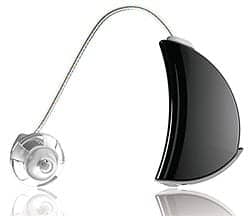
FIGURE 1. The Ytango consists of the MaRiC (a microphone and receiver in the canal dome), which connects to an over-the-ear component.
The MaRiC and its over-the-ear component make up the ExSilent Ytango. The performance of this new hearing system is further explored in this article (Figure 1).
Study 1: High Frequency Amplification Advantage
Methods. In order to quantify acoustical differences between the two types of microphone placement (ie, traditional BTE/RIC microphone placement at the top of the ear) and MaRiC microphone placement (Figure 2), a procedure was established that used probe microphones to measure gain at each microphone position (re: open soundfield).
The sound pressure was measured at the subject’s ear using a Frye real-ear probe microphone with a 70 dBSPL composite noise signal as the input. Two measurements were taken: one at the place of a traditional BTE microphone and the other within 2 mm of the MaRiC’s microphone with the MaRiC in-situ (ie, deep within the auditory meatus). The sound source azimuth was at 45° and a reference microphone was placed on top of the subject’s ear to keep the soundfield leveled. Test measurements were done on a total of 8 subjects and then averaged.
Results. Findings show that the response provided by the canal probe microphone was superior when compared to the response of the BTE probe microphone. The canal microphone response showed a 5 to 8 dB improvement over the BTE microphone response in the frequency range of 2000 to 5000 Hz. This demonstrates the valuable acoustic contribution of the pinna and ear canal at the sound pickup point of the MaRiC.6
This high frequency sound pressure buildup can mainly be attributed to the pinna and ear canal, because the BTE microphone response showed only a small amount of pressure buildup (Figure 3).
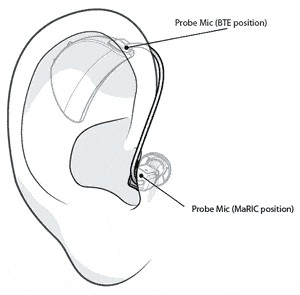
FIGURE 2. Illustration of probe microphone positions with the MaRiC in-situ.
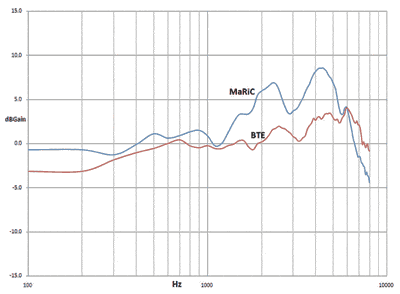
FIGURE 3. Differences of in-situ gain (BTE versus canal microphone positions) as shown in Figure 2.
Study 2: Directivity of the Auricle
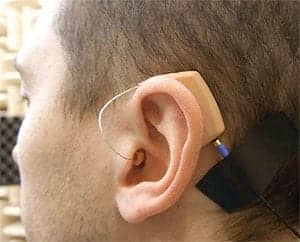
FIGURE 4. Test setup for directivity measurements; housing with microphone and MaRiC in the ear.
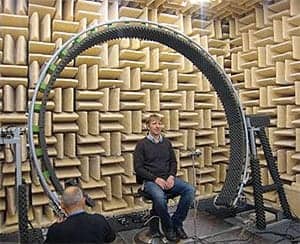
FIGURE 5. Measurement setup in anechoic chamber.
Methods. To further quantify differences of high frequency resonances between microphone placement on the top of the ear and placement in the concha, polar plots were measured in an anechoic chamber for the BTE and MaRiC (Figure 4).
The polar plots were recorded by driving a loudspeaker with a 70 dBSPL chirp from 100 Hz to 24,000 Hz. The loudspeaker was mounted on a bow that rotated the loudspeaker from 0° to 360° (Figure 5). The test was performed in the horizontal plane; the loudspeaker was rotated over 360º in 64 equal angles.
For each position, the canal and BTE microphone outputs of 8 chirps were averaged. The output of each microphone was normalized for the free-field sensitivity of the microphones, so that the results represent the actual sound pressure. In the polar plots, the outputs of the 7 participants were averaged for each angle, and Figure 6 shows the attenuation values (in dB) for each configuration, normalized so that 0 dB represents the maximal value for each curve. The left ear is at 270° azimuth.
Results. By examination of the polar plot patterns (Figure 6), it is clear that the positioning of the microphone in the canal provides more attenuation of unwanted sounds than the BTE microphone position, especially between 0° to 270° for the left ear. This result is valid across all frequencies except for 1000 Hz, where values are nearly the same for the BTE and canal microphone positions.
This performance detail is consistent with the BTE/ITE performance data in Figure 3, where there is little difference in the in-situ gain of the BTE and the MaRiC microphone positions. However, by inspection of the hemispheres marked by 45° to 225°—where the left ear sound waves from the rear are reflected or absorbed by the head and pinna—it is clear that the canal microphone position attenuates more unwanted contralateral sounds at 500, 2000, and 4000 Hz than the BTE microphone position.7
Further inspection of the polar patterns suggests that sound localization will be enhanced by the head-related transfer function (HRTF)—a complex response function that takes into consideration the diffraction and reflection properties of the pinna, head, and torso. Localization depends, in part, on how sound waves from the same source in space differ spectrally and in amplitude from each other as they reach the left and right ear.
Examinations of the irregular polar plot shapes indicate that the aforementioned diffraction and reflection will be more pronounced with the canal microphone position than with the BTE microphone position. This implies that localization ability will be better for the canal microphone position.8
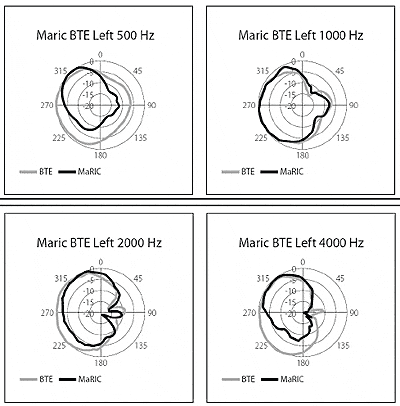
FIGURE 6. Polar plots of BTE and canal microphone positions for 500,1000, 2000, and 4000 Hz (left ear).
Conclusion
With its deep microphone placement that takes advantage of the natural physiology of the outer ear, the MaRiC-Ytango—ExSilent’s newest RIC device—outperformed a traditional RIC in terms of maintaining a high frequency emphasis, particularly at the frequency range of 2000 to 5000 Hz where 5 to 8 dB more gain was measured from the canal-placed microphone than from the microphone in the BTE position.
Because of this added high frequency gain provided by the pinna and the pinna’s ability to attenuate unwanted contralateral sounds, it is probable that speech discrimination in quiet and in noise will be improved with the microphone in the canal compared to a traditional RIC microphone position. We can expect the deeply inserted MaRiC to receive an acoustical type of preamplification that will intensify critical low-energy high frequency phonemes needed for increased speech discrimination given the focusing and the resonant qualities of the outer ear.
Ability to locate sounds likely will be more enhanced for the canal microphone position than with the BTE position, given tighter polar patterns and more diffraction and reflection for the canal microphone position.
Acknowledgement
The authors thank Mark Bren and Tim Peterson for gathering the data used in Study 1, and Aeldrik Pander and Christiaan Bijleveld for collecting the data used in Study 2.
References
- Freeman SJ. The Role of the Pinna in Speech Intelligibility. Boston: Laboratory for Research in Neuropsychology; May 1970.
- Preves DA, Griffing T. In-the-ear aids, Part IV. Hearing Instruments. 1976;27(9):16-17,32.
- Preves DA. Real-ear insertion gain provided by CIC, ITC, and ITE hearing instruments. Hearing Review. 1994;1(7):22-24.
- Berland O, Nielsen TE. Pressure Generated in the Human External Ear by a Free Soundfield. Copenhagen, Denmark: Oticon; 1968.
- Orton JF, Preves DA. Localization ability as a function of hearing aid microphone placement. Hearing Instruments. 1979;30(1):18-21.
- Preves DA, Griffing T. Extending high frequency response with in-the-ear hearing aid earmold design. Hearing Instruments. 1976;27(9):16-17,32.
- Preves DA. Directivity of in-the-ear aids. Hearing Instruments. 1976;27(5):12-14,56.
- Blauert J. Spatial Hearing: The Psychophysics of Human Sound Localization. Boston: MIT Press; 1997.
Citation for this article:
Anderson B, Van Doorn J. High frequencies and microphone placement lead to a new type of RIC hearing aid. Hearing Review. 2011;18(4):22-26.







